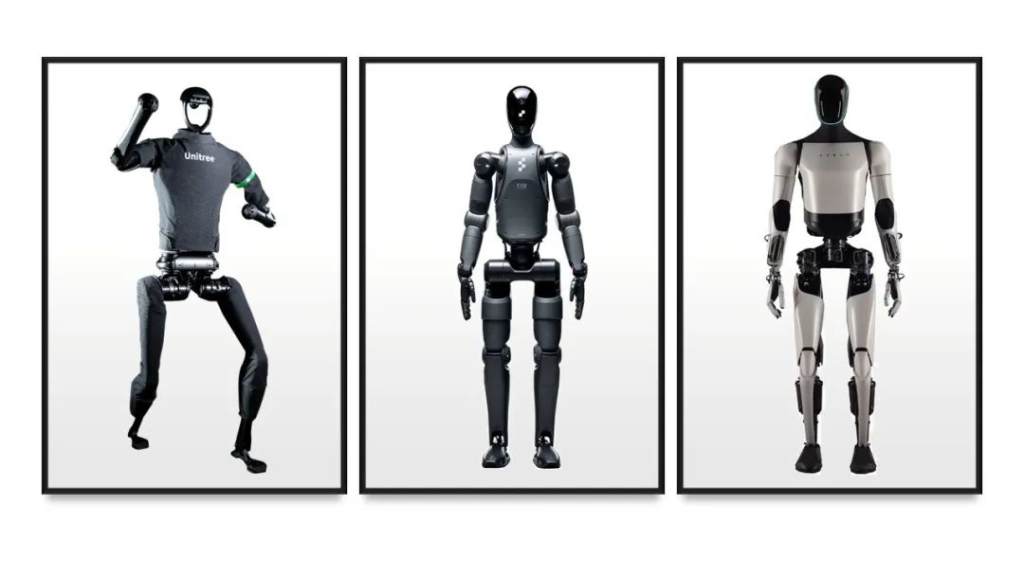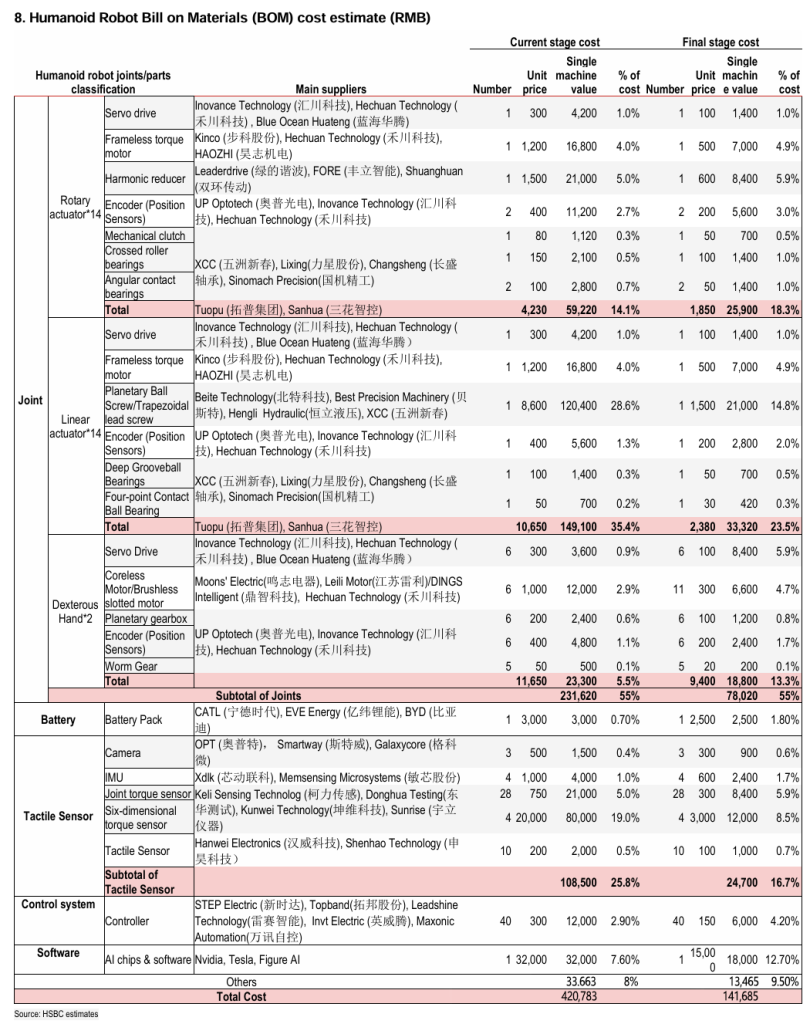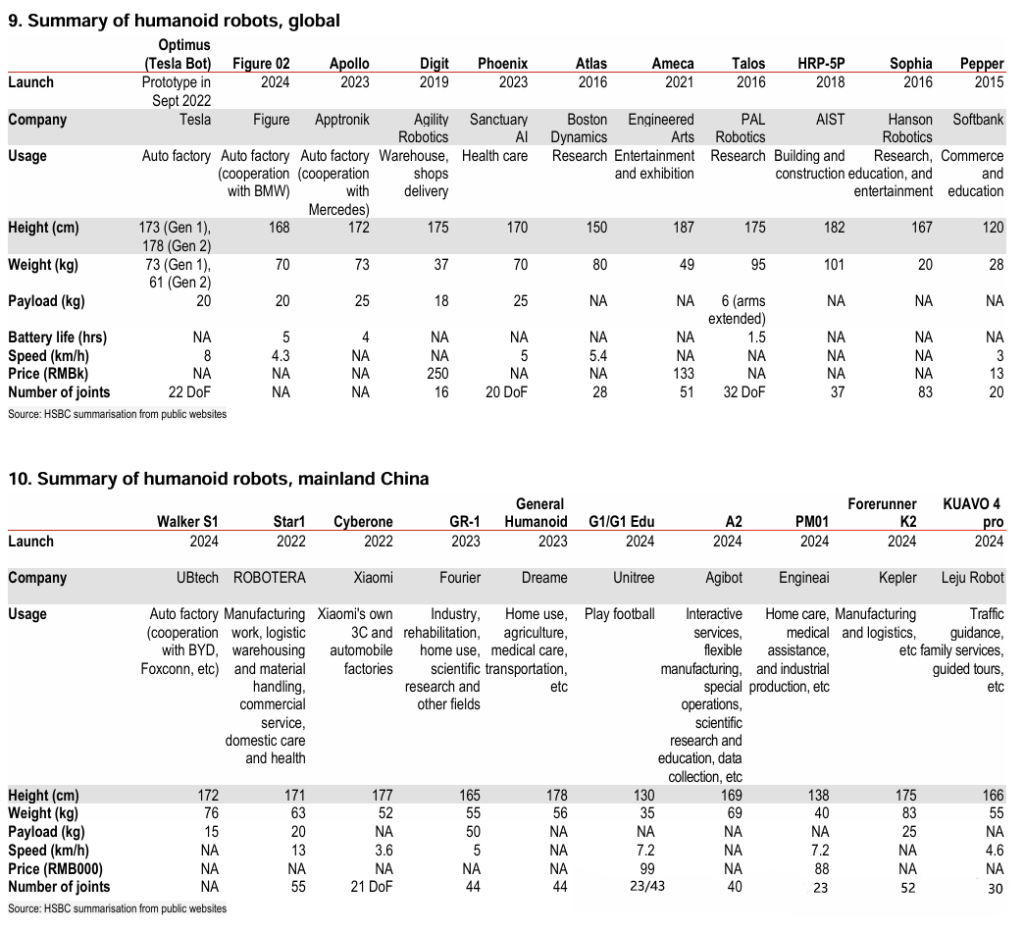An Analytical Framework of Tesla,Unitree,Figure AI’s Supply Chain
Training Models Reimagined
Traditional imitation-trained robots require approximately 500 hours of training data to complete a single task, such as folding clothes. This process must be repeated for each new task, resulting in low efficiency, high costs, and difficulties in large-scale deployment.

However, the introduction of the Helix VLA model has revolutionized this paradigm. Leveraging a pre-trained neural network backbone, it can effortlessly manipulate unseen small household objects without task-specific fine-tuning. Remarkably, the entire model was trained using just 500 hours of supervised data—comparable to previous single-task training durations—yet achieves multitask learning capabilities.
Market Size Skyrockets
From a market size perspective, humanoid robots show tremendous future potential. Based on announcements from leading humanoid robotics companies, our scenario analysis projects the market will surge from0.9 billion in 2025 to 73 billion by 2034, representing a staggering 63% CAGR. This explosive growth is primarily driven by continuously declining costs.


Unit costs are projected to decline from approximately 58,000 per robot to around 20,000 by 2032, representing an annual reduction rate of 11% between 2025 and 2034. This trajectory mirrors established industrial trends: industrial robots achieved a 7% annual cost reduction from 2006 to 2017, while Tesla vehicles demonstrated a 10% yearly cost decrease. These precedents confirm that economies of scale drive rapid cost reductions at higher production volumes – a pattern the humanoid robotics industry is poised to follow.
The Hidden Economics of Robotics Components
In humanoid robots’ cost structure, hardware components dominate, accounting for 55% of the Bill of Materials (BOM) – including actuators, motors, reducers, and ball screws. AI chips/software comprise 13%, while sensors represent 17%. Although supply chains remain fluid due to the lack of mass production, several Chinese companies have already begun providing samples to key AI developers in this field.





BOM Decomposition and
Core Competitors in Humanoid Robotics
Component-level cost decomposition reveals the current total unit cost of approximately ¥420k (US58 ),with a projected reduction to¥141k(US20k) at production maturity.


SUBSCRIBE TO STAY IN THE LOOP
Please enter your email address here and stay tuned DIGITAL


Active Community Global, Inc (ACG EVENTS Global) is a leader in conference planning and production. We produce world-class conferences like summits, technical forums, awards ceremony, company visiting and so on, focusing on areas of most relevance to our served industry sectors. We are dedicated to deliver high-quality, informative and value added strategic business conferences where audience members, speakers, and sponsors can transform their business, develop key industry contacts and walk away with new resources.